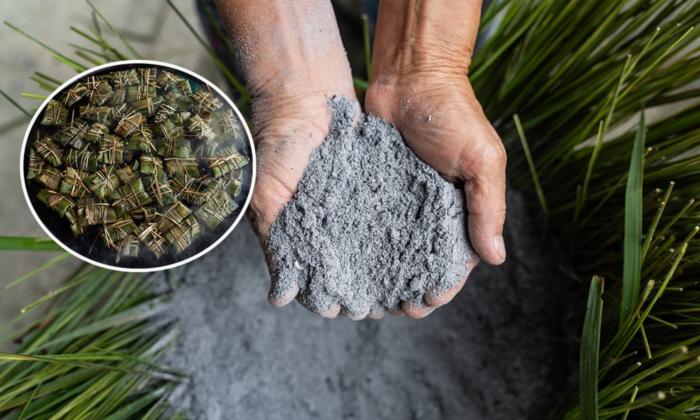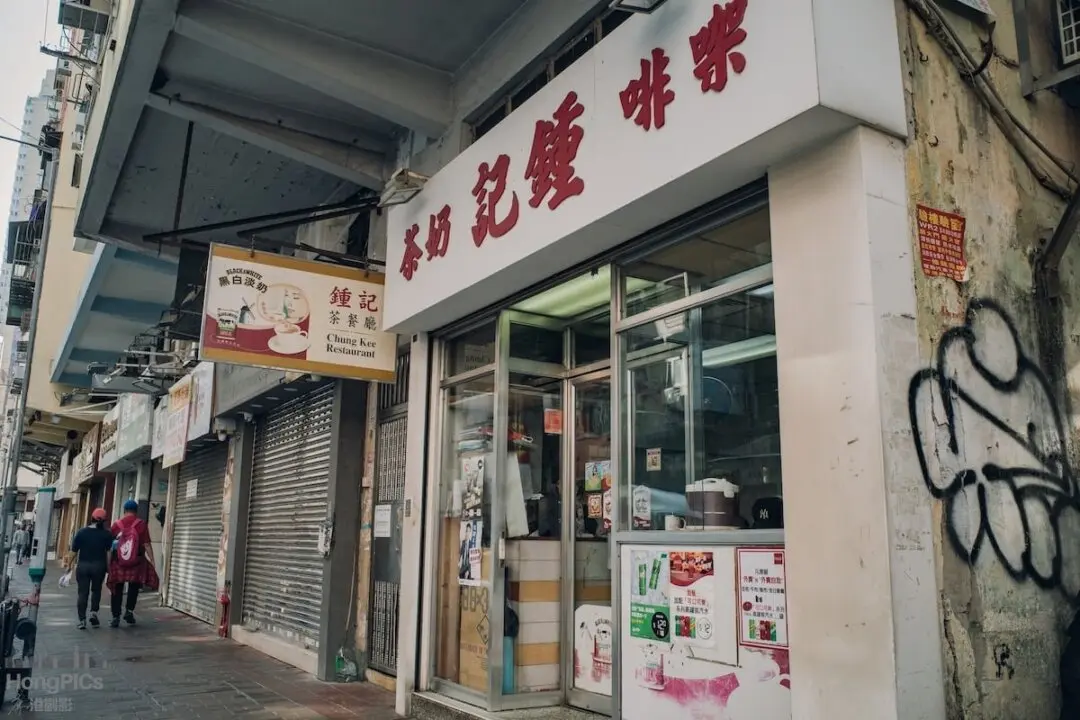Rice dumplings are a traditional food to celebrate the Dragon Boat Festival. Apart from the common savory rice dumplings, there is a sweet version popular in southern China called kansui-zong or lye dumplings (kee-chang in Taiwan). They usually don’t have any fillings but are enjoyed dipping or sprinkled with cane sugar, thus are also known as sweet dumplings.
Lye is an alkaline liquor leached from wood ashes, typically used in making soap or preserving food. In our story here, however, it is leached from orchard ashes—best kept secret from the local Hakka traditions—for making kansui-zong or ash-water rice dumplings.
Homemade Kansui-Zong
This year around the Dragon Boat Festival, our reporters visited a group of Wai Tau locals and Hakka villagers around Yuen Kong area along Kam Sheung Road in Yuen Long to explore authentic homemade kansui-zong.
Homemade Hakka-style “orchard-ash-water (lye) dumplings” have a unique aroma one can’t find elsewhere. As you unwrap the bamboo leaves, glittering and translucent golden grains are revealed, the fragrant and succulent taste definitely sets it apart from kansui-zong made commercially with chemically treated rice.

A Hakka Secret
The process of preparing lye (ash-water)—a key ingredient for making kansui-zong, takes one to two weeks. From burning of the woods collected from local orchards, and branches from lychee, longan, wampee, and guava trees, to collecting sieved ashes from daily cooking and storing them carefully away from contamination, it all calls for a lot of care.
When the time comes, the villagers would filter specially prepared water through these ashes to obtain the lye (ash-water) and soak glutinous rice in it the night before making the dumplings.
Time-consuming preparation processes for traditional goodies, like many other things from the old days, with no doubt have become rarities in the modern world.
More Than A Tradition
Seven or eight years ago, a group of like-minded Hakka ladies from the Yuen Kong neighborhood formed a “Arts and Crafts Heritage” community group, with the clear purpose of keeping Hakka food and craft traditions alive.
The group gets together during different festivals to make all kinds of old-time Hakka delicacies such as rice cookies, chicken in yellow (rice) wine, stuffed tea cakes, glutinous ball (mochi), ash-water rice dumplings, even including homemade rice wines and lychee wines. It is the villagers’ wish to pass on the arts and tradition of these Hakka delicacies to future generations.

Wisdom in Plant Ash Cooking
Plant ashes are mainly composed of calcium carbonate, but they are also rich in potassium, phosphorus, and trace metal elements such as iron, magnesium, zinc, and copper. Villagers use plant ashes as organic fertilizer to enrich their agricultural soil and neutralize acidified land.
Leached water from plant ashes is sometimes used in food preparation, not just in traditional Chinese cooking but South American people also soak and cook their corns in an alkaline solution to preserve nutrition and reduce the risk of mycotoxins.

One lady we met, Amy, warns about storing the ashes. “In the past, every woman has a place to stash their ashes to prevent contamination.” Surprisingly, the contamination comes from their friends with paws.
“Cats and dogs like to do their ‘business’ on the ashes. That is when contamination occurs and ruins the entire stash!”

Health Benefits
Auntie Ying demonstrated to us the organic leaching process.
First, ficus leaves are collected and boiled. “Dumplings we make benefit health since ficus leaves can clear the heat and detoxify the body,” Ying explained.
Then, a bamboo basket is lined with thatches and placed on top of a ceramic pot, creating an all-natural filter system.

Drive Away ‘Evil Energy’
Next, there is the traditional ceremony to “bless and purify” just before leaching. Pomelo leaves are added to the basket and the villagers would pray together for a successful production.
There is a traditional belief that festive food needs to be protected from “evil energy.” The word “evil” in Chinese medicine terms represents anything deviating from “righteous.” Pomelo leaves are believed to be able to drive away evil energies. Traditional food production is indeed also an exquisite art.
Interesting to know that scientists in recent years have also confirmed that pomelo leaves contain flavonoids which are antibacterial and anti-inflammatory.

Finally, orchard ashes are spread evenly on top of the thatches and pomelo leaves in the basket, and water from boiling the ficus leave is gently poured into this natural filter until the ashes are completely submerged.
As the water slowly soaks through the ashes, drip-drop drip-drop, ash-solution is slowly collected into the ceramic pot below.

The leaching process would last a whole night. The ash-water produced is naturally alkaline and has a color similar to soy sauce.
Depending on the concentration, villagers would sometimes decide if an additional round of leaching is necessary.

Benson Lau/The Epoch Times
Absorbing the Essence
Soaking overnight in this ash-solution allows the glutinous rice to absorb its essence fully and turns golden.
Now the glutinous rice is ready for wrapping dumplings the next morning.

Flat and Rectangular Shape
Rice soaked in lye is more puffy and harder to wrap into a pyramid shape. Kansui-zong parcels are therefore typically flat and rectangular.
Auntie Ying also gave us a tip that shorter bamboo leaves are generally more convenient for wrapping ash-water dumplings.

While lye dumplings don’t usually have fillings, a piece of sappanwood can be inserted which turns red once cooked, adding a touch of festivity and celebration.

While the preparation work was lengthy and delicate, the wrapping process was completed with ease by the group, who finished a batch of chats and laughter.

The ladies also shared with us their all-time favorite, chilled lye dumplings served with cane sugar in summer.
The dumplings can be frozen in the fridge too, and still taste nice after a year! They told us.
Anyone can feel the joy from the infatuating smiles on the group members’ faces when they made the kansui-zong. The process represents not only heritage but also unity and harmony when the villagers work together.
Crackling Fire is The Best
When the wrapping is done, Auntie Ying took out a humongous iron wok and placed it on firewood. “Cooking with crackling fire from nature is traditionally the best for ash-water dumplings,” she said, “as it cooks more evenly, resulting in a better texture.”



The Legacy Must Go On
Making ash-water dumplings or kansui-zong for Dragon Boat Festival is a big project that requires a lot of time and patience. Ladies from the “Arts and Crafts Heritage” group gather once every two years to make the dumplings together.


Nowadays only a very few would dedicate so much time to make traditional all-natural kansui-zong, though the art allows one to experience the fantastic flavors Mother Nature has to offer.
The ‘Arts and Crafts Heritage’ group certainly hopes their efforts could help preserve the Hakka traditions, allowing them to continue and be passed on to future generations.




